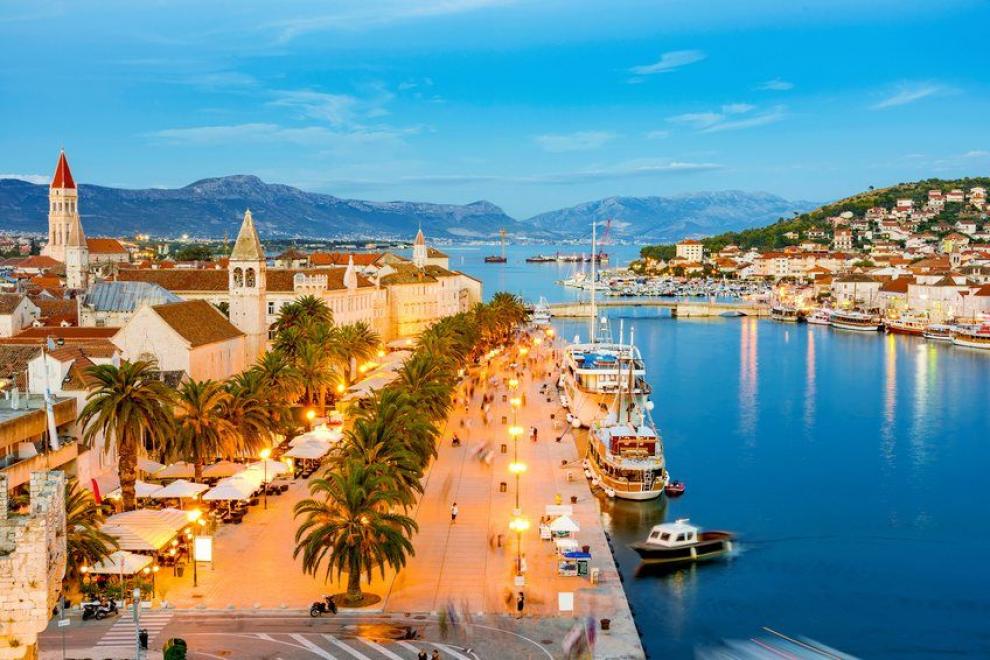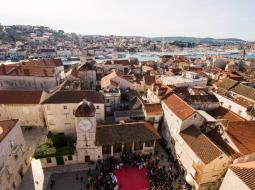Thessaloniki gets ready for its metro launch in November
The underground rapid transit lines have been under construction for almost two decades due to various project delays
 TheMayor.EU logo
TheMayor.EU logo 
Tragurion was founded by Greek colonists from the island of Vis in the 3rd century BC, and it developed into a major port until the Roman period. The name derives from the Greek "tragos" (male goat). The sudden prosperity of Salona deprived Trogir of its importance until the time Salona was destroyed. Tragurium was one of the Dalmatian City-States. Since the 9th century, Trogir paid tribute to Croatian rulers and to the Byzantine empire. In the 11th century, the diocese of Trogir was established and in 1107 it was chartered by the Hungarian-Croatian king Coloman, gaining its autonomy as a town.
In 1000 Tragurium inhabitants submitted to the Republic of Venice and began their trading relationship with the Italian peninsula.
In 1123 Trogir was conquered by the Saracens and almost completely demolished. Trogir managed to recover quickly experienced powerful economic prosperity in the 12th and the 13th centuries, with some autonomy under Venetian leadership. During the 13th and 14th centuries, members of the Subic family were most frequently elected dukes by the citizens of Trogir. In Dalmatian, the town was known as Tragur.
On 14 March 1381, after the War of Chioggia between Genoa and Venice, Chioggia concluded an alliance with Zadar and Trogir against Venice. In 1412 Chioggia finally became better protected by Venice, due to the relocation of the main customs office and the seat of the salt consumers office to Sibenik.
In 1420 a period of a long-term Venetian rule began, which lasted nearly four centuries. It was then that Trau (as the city was called by the Venetians) became one of the best cities in the Balkans with a rich economy and plenty of Renaissance works of art and architecture.
In 1797 Venice fall and Trogir became part of the Habsburg Empire. The Empire ruled the city until 1918, with the exception of Napoleon Bonaparte's French occupation from 1806 to 1814.
After World War I, Trogir and the rest of Croatia became part of the State of Slovenes, Croats and Serbs and subsequently, the Kingdom of Yugoslavia. During this period Italian speaking people, who until 1918 were among the city dwellers, left for Italy. Trogir was annexed by Italy during World War II. Subsequently, Tito's Partisans liberated it in 1944. After that, it yet again became a part of Yugoslavia, and since 1991 it has been part of Croatia.
Trogir is a town, harbor and municipality situated on the Adriatic coast in Split-Dalmatia Country in Croatia. The population of the town is 10,818 (2011) and of the municipality 13,260 (2011). Trogir is located 27 kilometres west of the city of Split.
The economy of Trogir is based on tourism, covering 50% of the municipal budget with more than 20,000 beds in hotels and private apartments. Trogir is one of the fastest-growing ports for sail-tourism in Croatia and boasts two yacht marinas. There is also a strong fishing and agricultural tradition among the population in surrounding areas.
The most important industry is shipbuilding, with "Trogir" shipyard established at the beginning of the 20th century. The shipyard has a capacity of two 55,000 ton ships. Between 1990 and 2004, 93 ships were built in the shipyard.

Trogir is home to numerous palaces, churches, and towers, as well as a fortress on a small island. In 1997 the town was inscribed in the UNESCO World Heritage List.
Trogir itself represents the best-preserved Romanesque-Gothic complex not only in the Adriatic but in all of Central Europe. The grandest building of Trogir is the church of St. Lawrence, whose main west portal is a masterpiece by Radovan, and the most significant work of the Romanesque-Gothic style situated in Croatia.
Address: Ivana Pavla II, 21 220 Trogir